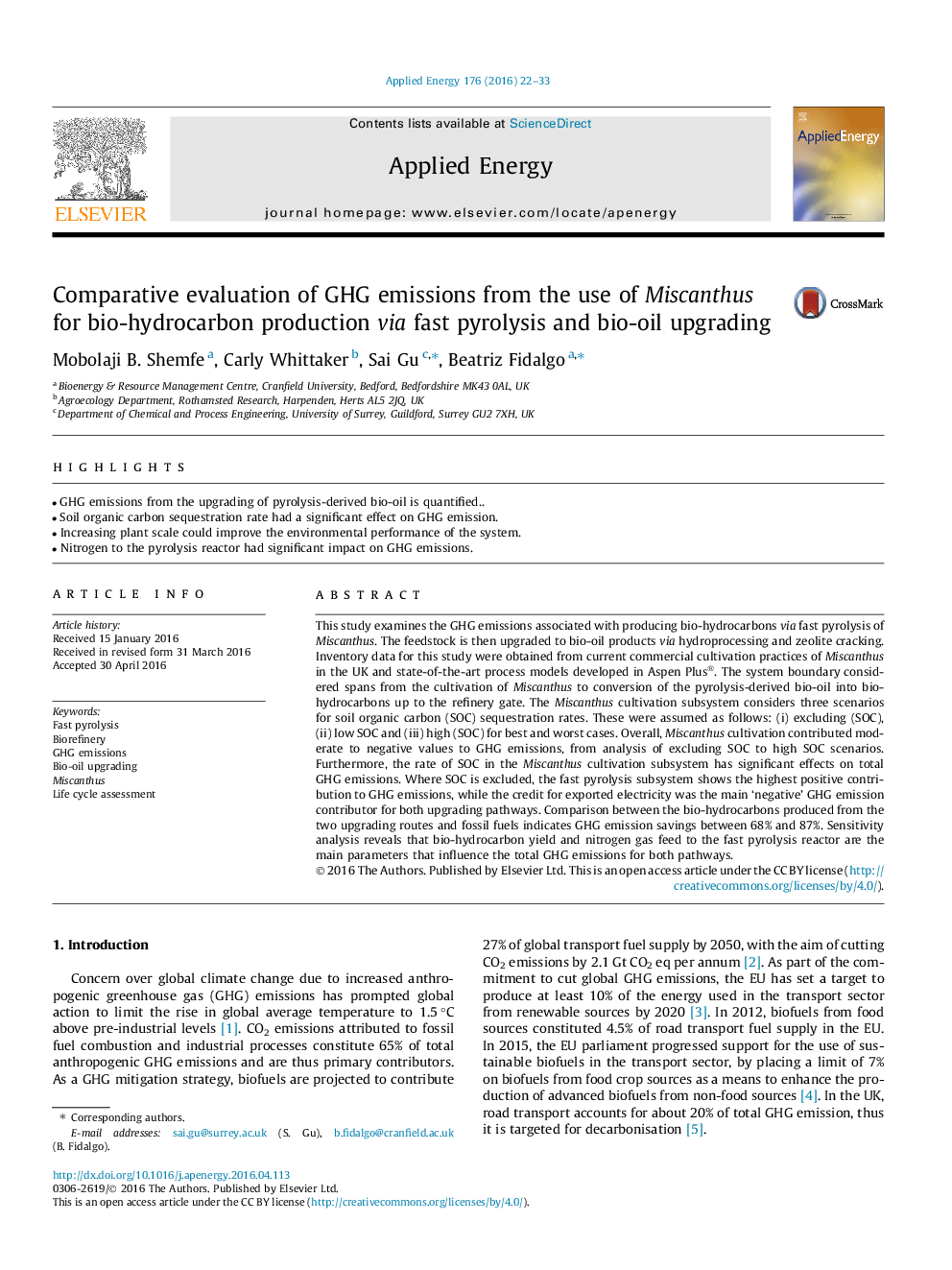| Article ID | Journal | Published Year | Pages | File Type |
|---|---|---|---|---|
| 6682859 | Applied Energy | 2016 | 12 Pages |
Abstract
This study examines the GHG emissions associated with producing bio-hydrocarbons via fast pyrolysis of Miscanthus. The feedstock is then upgraded to bio-oil products via hydroprocessing and zeolite cracking. Inventory data for this study were obtained from current commercial cultivation practices of Miscanthus in the UK and state-of-the-art process models developed in Aspen Plus®. The system boundary considered spans from the cultivation of Miscanthus to conversion of the pyrolysis-derived bio-oil into bio-hydrocarbons up to the refinery gate. The Miscanthus cultivation subsystem considers three scenarios for soil organic carbon (SOC) sequestration rates. These were assumed as follows: (i) excluding (SOC), (ii) low SOC and (iii) high (SOC) for best and worst cases. Overall, Miscanthus cultivation contributed moderate to negative values to GHG emissions, from analysis of excluding SOC to high SOC scenarios. Furthermore, the rate of SOC in the Miscanthus cultivation subsystem has significant effects on total GHG emissions. Where SOC is excluded, the fast pyrolysis subsystem shows the highest positive contribution to GHG emissions, while the credit for exported electricity was the main 'negative' GHG emission contributor for both upgrading pathways. Comparison between the bio-hydrocarbons produced from the two upgrading routes and fossil fuels indicates GHG emission savings between 68% and 87%. Sensitivity analysis reveals that bio-hydrocarbon yield and nitrogen gas feed to the fast pyrolysis reactor are the main parameters that influence the total GHG emissions for both pathways.
Related Topics
Physical Sciences and Engineering
Energy
Energy Engineering and Power Technology
Authors
Mobolaji B. Shemfe, Carly Whittaker, Sai Gu, Beatriz Fidalgo,
